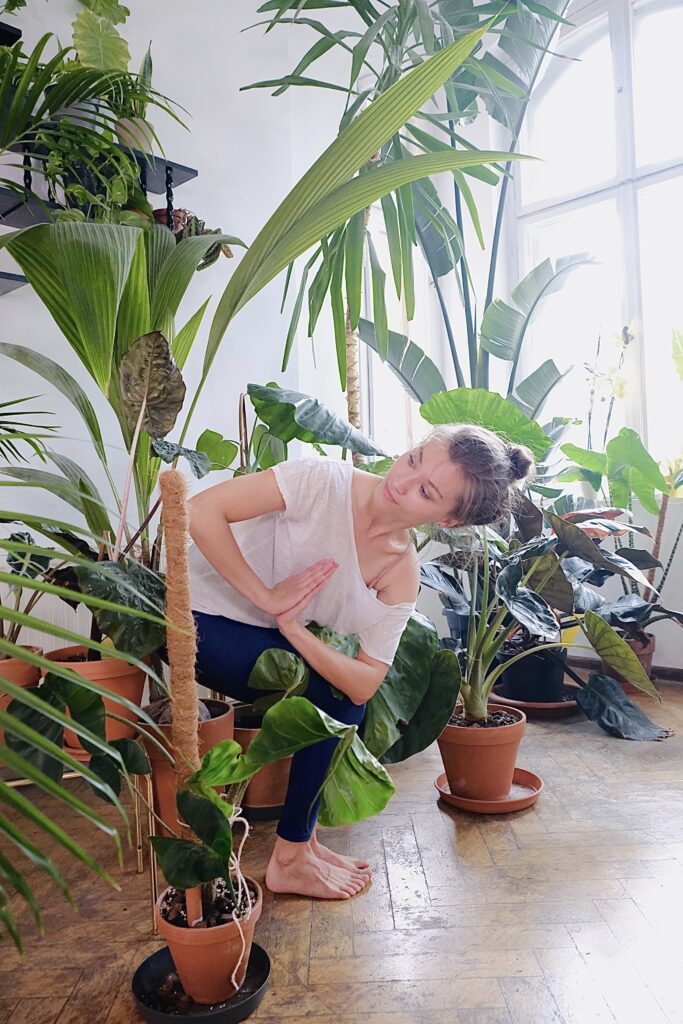How to start your journey with yoga - part 2: On the mat.
How to start your yoga journey - part 2: On the mat. Yoga with Paulina Guideline.
Congratulations on taking the initial steps in your yoga journey! Now, you bought your yoga mat, selected a studio, and booked a trial. After you immersed yourself in the yoga community, let’s explore some essential guidelines to maximize your yoga experience.
REMEMBER: WARM-UP FIRST
First of all, whenever you are just beginning your journey with yoga or are a more experienced practitioner, always remember about the warm-up. In our fast-paced lives, it’s easy to overlook that crucial part of your movement practice. While most classes begin gently to prepare the body, some may dive into more challenging poses from the start. In such cases, start slowly, engaging in small movements to generate heat in your joints, preventing potential injuries. Gradually increase effort, and if you arrive early, indulge in a self-warm-up or gentle self-massage to get the most from your practice.
EFFORT WITHOUT STRAIN
Secondly, find your comfort in yoga. According to Patanjali, in Sutra 2.46, asanas should be stable and comfortable positions, where you can breathe without strain. However, he didn’t mean no effort or no sweat, but simply preparing your body to the practice gradually, one step at the time toward more advanced asanas.
My recommendation? Adjust the intensity to your body’s limits, and utilize accessories like blocks, straps, or bolsters for your safety and comfort. And give your body time to get the most of yoga healing benefits.
REGULAR BREATH AWARENESS
Thirdly, observe your breath during asanas. Ensure it remains deep and steady, avoiding shallow or held breath. Deep breathing allows you to explore increased ranges of motion or intensity, while shallow breath signals a need to ease off. Whatever you practice: Tree pose and a Handstand, remember that “Yoga Is Not a Competition”; honor your body’s pace and take your time to find comfort and ease.
FOCUS YOUR ATTENTION
Concentration is key in yoga. Without it you would fall every time you stand on one leg. Always try to direct your attention to specific body parts, the breath, or sensations during poses. This heightened awareness contributes to archive higher levels of awareness and peaceful mind. But, if you loose it for a whole, don’t worry. You can always come back.
SAFETY FIRST
Remember to always prioritize your own safety especially if you just start your journey with yoga. Observe your body during the practice. Acknowledge any unusual sensations and discern whether they are pleasant or not. Most importantly, avoid the urge to compete with others (especially your teacher). That may lead you to ignore your discomfort and may higher a risk of future injury. In other words, modify poses to prevent injuries and cultivate mindfulness on your mat.

FEELING GOOD AFTER YOGA CLASS
Above all, yoga is a holistic practice. It should bring relief and relaxation, not exhaustion and anxiety. If your practice leaves you with negative emotions, judgements or restlessness – it may not have been the best experience to have! The goal is to find pleasure in connecting with your body, not to simply check every asana. In other words, approach your mat with the intention of overall well-being.
SUMMARY
In conclusion, whether you’re new to yoga or an experienced practitioner, it’s very important to keep this essential guideline in mind. If you experience pain post-class, if your poses affect your breathing in a negative way, or if you feel discomfort afterward, your practice may be ineffective or even potentially harmful.
Prioritize self-observation by attentively monitoring your body, thoughts, and emotions. Customize your practice to align with your individual levels of consciousness, fostering a rewarding and enduring yoga journey. And you will find peace and ease on all levels of consciousness of your mind, body and soul.
And if you want to find out how to start your yoga practice from the very beginning – check part 1 of my How to Start your Journey with Yoga guideline. There, I talk about props you require for yoga, clothes, but also finding a studio or an experienced teacher that can tailor practice for your specific needs.